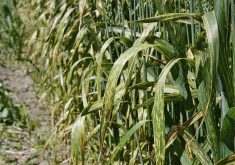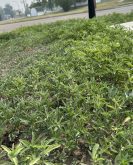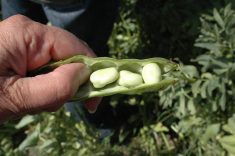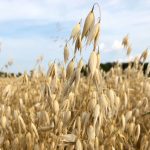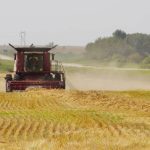Diversification is always recommended as a good long-term strategy in agriculture, and that includes canola breeding. University of Alberta associate professor Habibur Rahman is creating new varieties not only by crossing with each other, but by introducing genetics from canola’s relatives in the plant world.
Rahman, originally from Bangladesh, has been at the University of Alberta since 2003. He previously managed a canola breeding program for a private company in Denmark and was involved in several breeding programs in Europe. Rahman has six grad students studying under his direction and is involved with research in several breeding areas.
Read Also
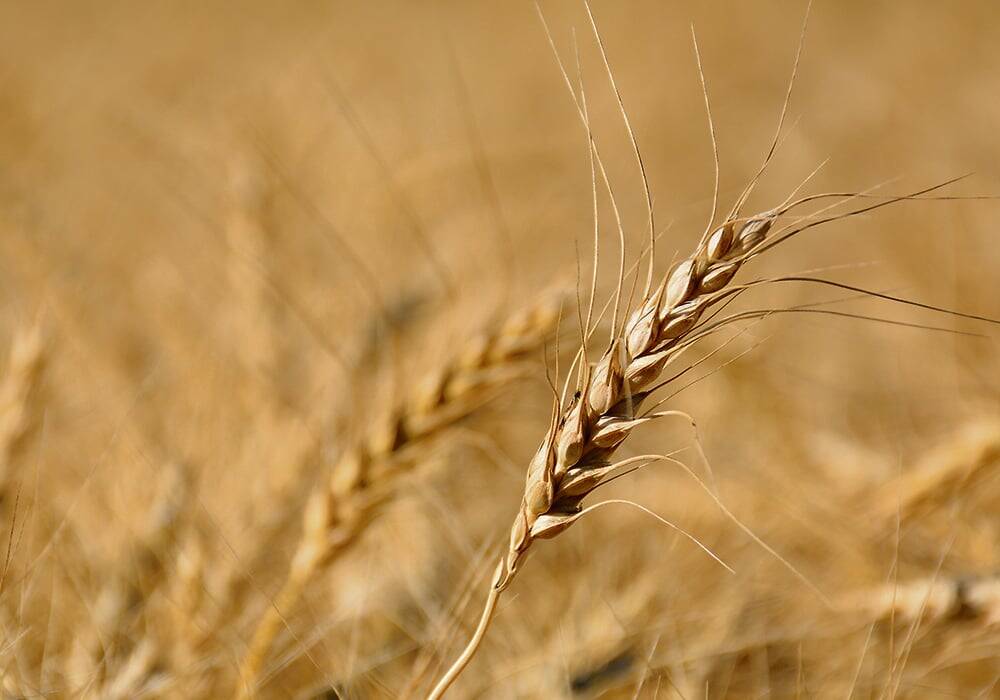
Low yield allowance adjusted to support farmers in Alberta
Alberta farmers can move more quickly to salvage poor crops for feed, after the federal and provincial governments announced increases to AFSC’s low yield allowances for the 2025 crop year.
Rahman’s background in plant genetics prepared him for specialization in canola breeding. Canola breeders respond to market demands and try to produce new strains of the crop to react to the demands of the industry and producers. Finding and isolating traits can take at least five to six years, and sometimes even longer.
Canola is from the genus brassica and species napus. Other plants in the canola family include Brassica rapa, which includes turnips and Chinese cabbage, and Brassica oleracea, which includes kale, cabbage, broccoli and cauliflowers. Breeders can cross strains of canola with each other, or with other members of the brassica families.
Crossing canola strains is easier – when crossing canola with vegetables, the breeder must rescue the immature embryo from the plant and grow it in a culture in the laboratory.
FOUR OBJECTIVES
Rahman’s breeding program has four areas, representative of the canola flower’s four petals. He breeds for disease resistance, genetic diversity, seed oil quality/ content and seed meal.
To breed a better plant, breeders try to double up strong genes and improve qualities. Rahman says each plant contains thousands of genes as well as different forms of these genes. Scientists cross two parents to get hybrid children, and then select and re-breed these children to get stronger genes.
“We put the genetics of two parents together, combine and reshuffle genes to try to get new genes and throw out some other ones.”
After many years of breeding, the genetic diversity of the species becomes narrow. To combat this, Rahman brings in genetic diversity from other species in the brassica family and rebreeds it back into the canola family to expand the genetic pool. Part of his breeding program involves crossing Chinese and European canolas with North American ones to integrate new genes into the canola pool.
CLUBROOT RESISTANCE PRIORITY
Disease resistance is a key area of canola research, especially when it comes to clubroot resistance. Rahman has isolated a strain of canola which is more resistant to clubroot. Trials are being conducted this year, and the strain should be available to producers in 2011.
However, resistance to disease has been known to break down over time, which constantly challenges breeders to find more resistance to combat the possibility of pathogen mutation.
“It is important to have more than one resistant gene to combat the pathogens,” said Rahman. The process can involve screening about 250 varieties from three different species of brassica to find new resistant genes.
Finding resistance for blackleg is a whole other ballgame. For this project, Rahman is working with Australian researchers to cross canola with other species.
BETTER OIL AND MEAL
Canola already produces a high-quality oil with an excellent fatty acid ratio, but breeders are currently working to increase it further and produce a new oil with high saturated fatty acid. Canola generally has a fatty acid profile of less than seven per cent, and the new program would create an oil with about 15-20 per cent fatty acid content.
“If we can increase the saturated fatty acid in the canola, we don’t need to rely on hydrogenation, which creates a trans-fatty acid,” said Rahman. The increase of the oil minimizes the production of harmful trans fats, which are not desired in the human diet. Another project in collaboration with the Alberta Research Council involves the breeding of canola with fatty acid profile of less than three per cent.
Rahman’s breeding program for improved seed meal quality is designed to meet the needs of the animal feed market. He is currently collaborating with a university in Germany and Agriculture Canada to breed the perfect yellow seed. Canola normally has a black seed with a thick coat. While he was in Europe, Rahman was able to transfer some genes from other species to create a canola with a thinner, yellow seed coat. Agriculture Canada in Saskatoon has also created canola with yellow seed.
Meal from yellow seed is easier for animals to digest and is desired in the feed market.
In addition to his research duties, Rahman teaches principles of plant breeding to botany, biology and agriculture students and a graduate seminar series for plant sciences students.






